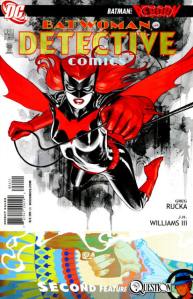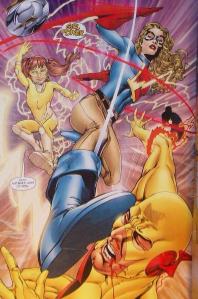Author Archive
cross posted on geek girls’ network
Geeky women feel constantly isolated, female comic book geeks most of all. Plenty of women are into sci-fi. Plenty more are into fantasy. Female gamer geeks abound in numbers that seem astronomical compared to the measly population of female Wednesday afternoon comics consumers. Some of my girlfriends read “graphic novels,” a term used mostly to make the more intellectually elite comics sound like something, anything, other than a serialized comic. Some of my girlfriends like Sandman, they like Watchmen, they LOVE Fables – but to date I’ve only converted one graphic novel girlfriend into a voracious cape & tights installment reader.
Every week, I bound into my comic shop to pick up my pull list. I have seen two other women there, ever – both employees. (I’m sure plenty of other women shop there. I just never see them.) When I make pilgrimages to Meltdown in Los Angeles, I might see one other lady in the store, but more often than not she’s someone’s mom, someone’s bored girlfriend, or she’s just popped in to pick up some “graphic novel” her hipster friends have been raving about.
(Understand, if the term graphic novel brings more readers to the medium, I’m all for it, but that doesn’t mean I don’t think you sound like a snobby jerk when you say it. Are there pik-chers and words in balloons? It’s a comic. Stop kidding yourself.) Ahem.
While the influx of casual new female readers to the comics industry is a great leap forward, we still lag far, far behind in terms of week to week fandom, and even further behind when it comes to superheroes. The general female disinterest in superhero comics isn’t terribly shocking; comic book superheroes are thematically steeped in male wish fulfillment. True, movies like The Dark Knight and Iron Man have made some heroes accessible on a wider cultural level to both men & women, but getting a woman to read anything other than the direct movie adaptation is still going to be a tough sell. Superhero narrative in comics has come a long way since Action #1, but it’s still laden with rock-em-sock-em, save-the-day, get-the-girl motifs.
 The Big Two have attempted to market to women in a million different ways over the years. (Don’t get me started on Marvel Divas again.) We’ve had Wonder Woman shoved down our throats so much that we’ve choked on her. Writers like Greg Rucka and Gail Simone have certainly brought her out of bondage – literally – but at the end of the day she is fundamentally un-relatable for most women. Wonder Woman is steeped in male wish-fulfillment fantasies just as much as Superman & Batman are. A writer might be able to rise above that over the course of a single arc, but the truth remains that until we finally find the ret-con that works, Wonder Woman is still a reactionary warrior, a man’s woman. We don’t relate to her, no matter how much they play up the COMPASSION aspect, no matter how much they de-power or over-power her, because she’s not one of us. We need women we can relate to, women that fill a FEMALE superhero wish-fulfillment fantasy, not a warped version of the male one.
The Big Two have attempted to market to women in a million different ways over the years. (Don’t get me started on Marvel Divas again.) We’ve had Wonder Woman shoved down our throats so much that we’ve choked on her. Writers like Greg Rucka and Gail Simone have certainly brought her out of bondage – literally – but at the end of the day she is fundamentally un-relatable for most women. Wonder Woman is steeped in male wish-fulfillment fantasies just as much as Superman & Batman are. A writer might be able to rise above that over the course of a single arc, but the truth remains that until we finally find the ret-con that works, Wonder Woman is still a reactionary warrior, a man’s woman. We don’t relate to her, no matter how much they play up the COMPASSION aspect, no matter how much they de-power or over-power her, because she’s not one of us. We need women we can relate to, women that fill a FEMALE superhero wish-fulfillment fantasy, not a warped version of the male one.
Which brings me to the modern Bat-family. I couldn’t relate one bit to Cassandra Cain, the until-recently Batgirl. Cass was socially handicapped and functionally illiterate, thanks to growing up in near-complete isolation. For Pete’s sake, she fought crime in a fetish suit. Her mouth was literally zipped shut in the thing. Even as Rucka and then Simone tried desperately to guide Diana out of the sub-dom bondage subtext, Cass Cain embraced it heartily. Cass Cain was a trained assassin at the cost of severe childhood abuse and some serious Daddy issues, she’s an over the top, beyond screwed up problem for Batman to swoop in and solve. And when Bruce died (sort of) Cass just gave up, passing the cowl to Stephanie Brown, once Robin, once Spoiler and now, something entirely new.

Stephanie’s Batgirl is the most relate-able since Barbara, if not more so, at least as far as so-called “regular women” are concerned. She’s young, she’s in college, she’s kind of a screw-up. True, she’s also a product of the hit-or-miss nineties comics industry, but Steph is just…normal, unlike most women in capes. The first arc of the new ongoing Batgirl book dealt with Stephanie desperately trying to grow up, to see something through and gain the blessing of her forebear, Barbara Gordon. And when she did, I wept. You see, I was kind of a screw-up kid too; I spent most of my early twenties desperately trying not to be total screw-up and generally failing miserably at it. Not everyone was a big mess of young adult flakey-flix, but the need to overcome, to be better than what you’ve been on a realistic human level – as opposed to trying to learn to read and be a little less traumatized by your assassin upbringing? That’s relatable. That’s interesting. That’s a story women who don’t read comics just might pick up. If they knew it existed.
At the other end of the Bat-spectrum, we’ve got Kate Kane, the awesome, punk rock, redheaded, kick ass grown up holy crap-I-want-to-BE-HER Batwoman. And oh yeah, she’s a lesbian. Of course, her sexual orientation is more a matter of fact than a matter of narrative. Batwoman is not an after school special. Kate is the cool senior girl we all wanted to become when we were freshmen. She’ll throw an elbow and kick you into the wall, and she’ll do it in full body armor with her boobs covered up. She’s got awesome hair, badass tattoos and sweet red stomper boots. While Kate gets ground support from her Colonel Dad, she doesn’t need the him or the Oracle in her ear to tell her to watch out for marauding frat boys. In a way, Steph is what we were, and Kate’s who we wanted to be.
Too bad neither one of them actually has POWERS. Even Marvel let the ball drop here. While Marvel technically has more high-profile powered women than DC, most of them are, as Wonder Woman, completely unable to connect. Storm was a princess turned orphan turned queen, Jean is so over-powered they had to turn her into a metaphor for PMS, Emma connects a bit, but only because she’s totally that one girl we ALL hated (admit it, you still know the first and last name of the first girl who told you she was better than you.) The Marvel women we DO relate to on some level, we relate to in the most depressing ways. Rogue is a runaway who hurts everything she touches, we might relate to that on some level as well, but there’s just no happy ending for her – be it in marriage or gratuitous sex or just, you know, being able to be close to ANYONE she loves physically.
And Kitty? Mommy and Daddy loved her so much they sent her to the special school where she could learn to be more specialer. Her biggest problem was that her boyfriend died for, like, ten minutes. And when it comes to Sue Storm, you kind of expect Reed Richards to start humming “Under my Thumb” at any given moment.
Granted there are slightly more obscure female characters that might resonate more with some women, on some level – but when it comes to solo titles, women aren’t buying female-hero helmed ongoings because, for the most part they (a) don’t exist or (b) don’t speak to women. At all. This is beginning to turn over a bit with Kate (+Renee), Steph, and Jessica Drew all heading up their own books right now, which is great – except most women have never even heard of these hero identities, much less the women under the cowls. And the Bat & Spider prefixes don’t help, unfortunately, most women hear _____Girl or _____Woman or Lady _____ and lose all interest.
 Pink trade paperbacks and Sex & the City with tights rip-offs aren’t going to bring women around on Wednesdays. Comics only recently became remotely socially and intellectually acceptable for dudes, it’s going to be a while before boys don’t double take when they realize that, no, I am not messing around, I really do know way, way, more about Wolverine than they do. Marvel’s recent Girl Comics is a step in the right direction, celebrating not only female characters but also female creators. The only thing is – why do we need to get our own special book? Why aren’t female characters and creators just standard issue? Women will start reading comics in droves if we can ever get the word out that, holy crap, some of these are good. At this rate, we’ll all be reading comics projected onto the wall by the implants in our brains by the time female creators are standard issue instead of rare & novel. But to get there, we need well written, relate-able, at least vaguely plausible female ass-kickers, not gimmicks and women desperately trying to fulfill male fantasies while kicking half-naked through the air.
Pink trade paperbacks and Sex & the City with tights rip-offs aren’t going to bring women around on Wednesdays. Comics only recently became remotely socially and intellectually acceptable for dudes, it’s going to be a while before boys don’t double take when they realize that, no, I am not messing around, I really do know way, way, more about Wolverine than they do. Marvel’s recent Girl Comics is a step in the right direction, celebrating not only female characters but also female creators. The only thing is – why do we need to get our own special book? Why aren’t female characters and creators just standard issue? Women will start reading comics in droves if we can ever get the word out that, holy crap, some of these are good. At this rate, we’ll all be reading comics projected onto the wall by the implants in our brains by the time female creators are standard issue instead of rare & novel. But to get there, we need well written, relate-able, at least vaguely plausible female ass-kickers, not gimmicks and women desperately trying to fulfill male fantasies while kicking half-naked through the air.
Liked this post? Vote it up on reddit!
[Subscribe to High Five! You know you wanna.]
Christmas came early this year! This morning, I woke up to a five page preview of BOOM! Studios‘ upcoming Darkwing Duck title. I’ve been a little nervous ever since the miniseries was announced because this thing has the potential to completely ruin my childhood. I needn’t have worried. Darkwing is safe under the stewardship of writer Ian Brill and artist James Silvani. Brill’s Darkwing effortlessly blends irreverence with cantankerousness, Launchpad is an idiot, and Megavolt shows up with a stupid, stupid, scheme. Disney Afternoon enthusiasts will get a kick out of seeing Darkwing back in action, people who hate happiness won’t be interested.
Check it out!
 The soaring popularity of Alan Moore‘s League of Extraordinary Gentleman and Vertigo’s Fables has inspired a slew of seeming copycats, enough that at this point the meta-literary comic could be given its own sub-genre. This month, IDW offers up Anthony Del Col & Conor McCreery’s Kill Shakespeare, a story that “pits Shakespeare’s greatest heroes against his greatest villains.”
The soaring popularity of Alan Moore‘s League of Extraordinary Gentleman and Vertigo’s Fables has inspired a slew of seeming copycats, enough that at this point the meta-literary comic could be given its own sub-genre. This month, IDW offers up Anthony Del Col & Conor McCreery’s Kill Shakespeare, a story that “pits Shakespeare’s greatest heroes against his greatest villains.”
The greatest challenge of a meta-literary comic is to integrate its source material without alienating readers unfamiliar with it. Thanks to Leonardo DiCaprio, everyone and their mother knows the basic plot of Romeo & Juliet. Kids who went to public school might recall Hamlet and Macbeth, but believe it or not there are perfectly intelligent people who’ve never actually read a single work of Shakespeare. (Because modern society is hopelessly pedestrian and the public education system is broken I tell you, BROKEN! Ahem.) Kill Shakespeare #1 clears the source material hurdle handily, making itself accessible to readers who don’t exactly know their Shakespeare. The plot more than holds up without having read Hamlet or Richard III, though of course a working knowledge of Shakespeare makes reading Kill Shakespeare a delightful exercise in Brit-Lit geekery. (Lady Macbeth as an evil villain? Yes, please!)
Kill Shakespeare‘s action sequences are, well, action-packed. While Hamlet and pals (yes, Rosencrantz & Guildenstern) are sailing to England, their ship is overrun with pirates, resulting in a six page battle rendered larger-than-life by artist Andy B. My 14 year old brother could easily be tricked into reading this book, believing it was nothing more than a totally sweet comic about pirates, ghosts and kings. (You know, if the title didn’t make it clear that it’s all derived from Shakespeare, which is like, you know, smart stuff.)
Perhaps Kill Shakespeare‘s strongest selling point is how well the book captures the epic scope of Shakespeare’s works, binding them into a merged universe. These stories aren’t just pretty poetry, even his comedies are dirty, grimy, gritty, bloody, dramatic, and to be honest they lend themselves so much to a comic book meta-universe aesthetic that I can’t believe no one’s tried it before.
You could give Kill Shakespeare to your pre-teen kids, thus tricking them into reading Shakespeare of their own accord. In fact, if I were a high school English teacher I’d be ordering Kill Shakespeare in bulk.
Fun book. I read it drinking coffee because it was the MORNING and I’m not a total alcoholic. (Geez guys). But if it’s 3pm or later, get your paws on some homemade honey mead and check out Kill Shakespeare #1, in stores April 14.
- In: Fandom | News
- 2 Comments
 If you want your beloved Disney Afternoon heroes to come back to life in comic book form, apparently all you have to do is ask.
If you want your beloved Disney Afternoon heroes to come back to life in comic book form, apparently all you have to do is ask.
Last October at Long Beach Comic Con, BOOM! Studios hosted a panel on their upcoming titles, including a few from their Disney line; Uncle Scrooge and Mickey Mouse. The second I saw ducks, I shot my hand up and asked when we’d be seeing a Darkwing Duck comic – at the time, the answer was something along the lines of “Not sure, maybe never.” Turns out, they were either playing coy last year or their plans changed because I just received this press release:
March 13th, 2010 – Seattle, WA – He is the terror that flaps in the night. He is the super-hero that is about to make his return. He is…DARKWING DUCK! This June, Disney and BOOM! Studios herald the triumphant comeback of the beloved Disney Afternoon star with DARKWING DUCK: THE DUCK KNIGHT RETURNS. Lanchpad McQuack, Gosalyn Mallard, and the fiercest of Darkwing’s rogue gallery all join the daring duck of mystery in an all-new, completely original four-issue mini-series: DARKWING DUCK: THE DUCK KNIGHT RETURNS!
Whether you’re a Darkwing fan from the hit TV show or want to discover this cherished character for the first time, this new mini-series delivers all the madcap adventurous spirit that made a fan out of millions!
Written by Ian Brill (ZOMBIE TALES) and James Silvani (MUPPET KING ARTHUR), the mini-series sees Darkwing’s city of St. Canard under the control of a mysterious corporation. Darkwing’s been out of commission for a while but when his friends and family are under attack…you better watch out you bad boys! Darkwing fights new villains as well as old, for Megavolt, Quackerjack, Liquidator and Bushroot are on the loose!
“It’s such a dream to bring back Darkwing, a favorite of mine and millions of other’s,” says series writer Brill. “Everyone involved in this book are working tirelessly to make sure this comic has the same feel of anarchic fun of the TV series, while still presenting a whole new adventure in the life of Darkwing.”
Debuting in 1991 as a spin-off of the hugely popular DUCK TALES, DARKWING DUCK brought super-hero action and excitement to the Disney Afternoon animation block, captivating viewers for years. Shown around the world, DARKWING DUCK is still a fan-favorite of pop culture fans everywhere.
DARKWING DUCK: THE DUCK KNIGHT RETURNS #1 is written by Ian Brill with interior art by James Silvani. The debut issues features two covers in a 50/50 split by Magic Eye Studios and Silvani respectively and a 1-in-10 incentive cover by Silvani and Jake Myler.
 I’m not gonna lie to you, I’m more excited about this than I am about the new Flash run. And I love the Flash. We’ll be sure to preview the return of Darkwing for all you nineties kid comic nerds out there as soon as it’s available!
I’m not gonna lie to you, I’m more excited about this than I am about the new Flash run. And I love the Flash. We’ll be sure to preview the return of Darkwing for all you nineties kid comic nerds out there as soon as it’s available!
Let’s. Get. Dangerous!
Even as a good guy, Max Damage is a dick – and that’s what makes Incorruptible awesome. The long-awaited (at least by us ) follow up to Mark Waid’s Irredeemable – which features the Plutonian, a Superman-esque hero, going very, very bad – Incorruptible is the story of a villain going straight. Mild spoilers ahead, folks.
But Max Damage barely knows where to start. He kidnaps a cop so he can get his very own Jim Gordon, he stops sleeping with his underage sidekick, he turns his henchmen over to the police, he torches 4.2 million dollars. Instead of, you know, donating it to a children’s hospital or something – Max may have decided to switch sides, but his motives for the change thus far seem damned self serving, which to anyone who’s been reading comics for more than 10 seconds is a sure sign that someone’s a villain at heart.
So far, it seems that all Max understands of being heroic is simply to do the opposite of villainy; the classic motivations for heroism elude him. Indeed, his choice to switch sides seems rooted in his animosity for the Plutonian. Whatever side the Plutonian is on, Max is on the other. Still, Max is acutely aware of the fact that he may be the only person on the planet with a chance of stopping or at least staving off the Plutonian’s rampage.
Incorruptible isn’t a redemption story, at least not yet. Max wanted a world he could be a bastard in, but with the Plutonian rampaging, there might not be a world at all before long (see: Singapore). But Incorruptible doesn’t simply re-hash Lex Luthor’s “If Not For You, I’d Be Beloved!” sentiment, or drop us onto Earth-3. Max may have decided that it’s time to take a stand against the Plutonian, he may have decided that in order to do so he’s got to renounce petty villainy, but at heart, Max isn’t selfless enough to pull off the full hero act.
Than again, neither was the Plutonian. Maybe our heroes need to be a little selfish. You know, so they don’t snap and kill us all.
Incorruptible, like Irredeemable, and Empire before them, is Mark Waid at his best, dissecting the nuances of superhero/supervillain psychology with an understanding of the genre that eclipses many other writers. Incorruptible is a great ride, whether you’ve read Irredeemable or not. Check out the preview below and pick up the book this Wednesday.
High Five! Comics! – #100
Posted on: November 11, 2009
Should we be releasing 5 variant versions of this post? Oooo! I know! We can release it wrapped in a black plastic wrapper and tell everyone it’s a collector’s item for sure!
Orrrrr not.
Jon, Rob, and I sat down a few months ago after tearing through a six-pack and a Wednesday pull. We started riffing (and we’re funnier in Real Life, I swear). After a while, I said, “Man, we should podcast or something.” And thus, the birth.
Granted, we’re at post #100 and haven’t quite gotten around to podcasting yet. We’ll get on that one of these days. Really.
Big thanks to our other contributors, Hava, Brendan, and Ian – at least one of whom may or may not have a new regular High Five! column in the works. Thanks also to BOOM! Studios, who for some reason seems to give a (small) rip about what we think, Kelson at SpeedForce.org for all those retweets, TV Rots Your Mind Grapes for reminding us there’s entertainment outside comics (the girls are funny, read them), all of our Twitter followers, all the artists/writers/letterers who’ve been willing to let little old us pick their brains, and most especially to everyone who’s been reading us everyday, even when we’ve sucked.
We’ve got some great stuff in the pipeline, so stick with us, High Fivers!
Here’s to making it to issue #600.
Chug!
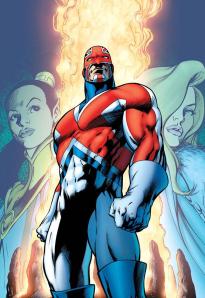 I mean, maybe I’ve just been more exposed to British culture than most American kids, thanks to growing up with a British stepfather (Captain Britain was born in Essex, by the way. What UP, parents who read our blog?) but how is Captain Britain not more popular in the States, or even in the UK?
I mean, maybe I’ve just been more exposed to British culture than most American kids, thanks to growing up with a British stepfather (Captain Britain was born in Essex, by the way. What UP, parents who read our blog?) but how is Captain Britain not more popular in the States, or even in the UK?
Fun Fact #1: The designation of the main Marvel Universe as “Earth 616?” Yeah. That was thanks to David Thorpe’s early eighties revamp of Captain Britain.
Fun Fact #2: You know who Psylocke is, right? Of course you do! But were you aware that Captain Britain is her brother?
(Ok, the fankids probably knew #2, but High Five!’s more casual readers probably didn’t.)
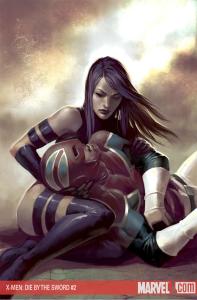 Besides that fact that Brian Braddock is a whole hell of a lot more important to the Marvel U than modern continuity would have you believe, the David Thorpe/Alan Moore/Jamie Delano + Alan Davis stories in the early eighties were remarkably ahead of their time. In the first issue of the revamp, Braddock and his sidekick, Jackdaw the elf, are sent by Merlin (yes, that Merlin) to an alternate Earth (238, for anyone keeping track.) Britain of Earth 238 is run by the borderline fascist British National Party and the entire populace is ridiculously violent and hateful. Unbeknownst to the largely ignorant citizens, the alien Lady Saturnyne is hiding out, attempting to “evolve” this dimension by exposing the population to an evolutionary elixir. Apparently, Earth 238 is so backward that it’s retarding the evolution of the entire multiverse.
Besides that fact that Brian Braddock is a whole hell of a lot more important to the Marvel U than modern continuity would have you believe, the David Thorpe/Alan Moore/Jamie Delano + Alan Davis stories in the early eighties were remarkably ahead of their time. In the first issue of the revamp, Braddock and his sidekick, Jackdaw the elf, are sent by Merlin (yes, that Merlin) to an alternate Earth (238, for anyone keeping track.) Britain of Earth 238 is run by the borderline fascist British National Party and the entire populace is ridiculously violent and hateful. Unbeknownst to the largely ignorant citizens, the alien Lady Saturnyne is hiding out, attempting to “evolve” this dimension by exposing the population to an evolutionary elixir. Apparently, Earth 238 is so backward that it’s retarding the evolution of the entire multiverse.
Scuttlebutt is that some of the higher-ups at Marvel had a problem with the “omniverse” storyline in Captain Britain, a concept they deemed a little too DC (which might have something to do with why I like it so much.) But ultimately, both Thorpe & Moore’s storytelling abilities, coupled with Alan Davis’ top-notch art, propel this run to the top of the early eighties comics scrap heap. Many a comics enthusiast can elaborate at length about the renaissance of the medium in the eighties, usually citing Swamp Thing, Animal Man, and Sandman as prime examples of the era’s superhero revamps. But Captain Britain deserves a place on that list, not because the work itself is on par with what Moore, Morrison, and Gaiman later accomplished in what many would call their seminal works, but because Captain Britain’s reinvention and his adventures in the wake of it were an early, pioneering step in the direction that super hero comics would take in the later eighties.
Captain Britain‘s writers were exclusively British themselves – so instead of a national hero written by Americans (which, my god, can you imagine what we might have done to him?), the British comic nerds had a hero who was uniquely, and accurately, British. I mean, this is a guy who can fly, create force fields and generally kick some serious ass – but because his writers themselves were Brits, it was easy to believe that Braddock would stop mid-fight for a cuppa. Which he could get away with because, you know, his villains generally had to take tea breaks too. (In fact, his biggest villain, Mad Jim Jaspers, traveled around in a giant flying tea kettle.) The very idea might seem completely insane to Americans, but to the British (who, by the way, do NOT fuck around when it comes to tea) it is entirely natural. The remarkable use of dialect in the series is also thanks to the British writers, a dropped ‘h’ here, an overemphasized ‘h’ there, dialect in Captain Britain is a pretty good indication of who is good or bad, poor or rich, and thanks to its British creators, it is lettered just so – even a Yank can tell the difference.
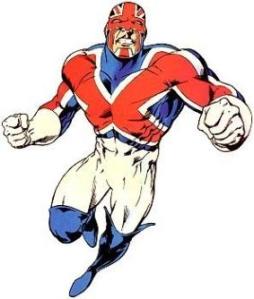 Perhaps the bulk of the credit must go to the artist, Alan Davis, who guided the series through several different writers and was listed as “co-creator” even alongside Alan Moore. In any event, it’s a complete mystery to me that this series isn’t a bigger deal than it is. There exist very few collections of Captain Britain. There are a few affordable trades but the best bang for your buck is the Captain Britain Omnibus
Perhaps the bulk of the credit must go to the artist, Alan Davis, who guided the series through several different writers and was listed as “co-creator” even alongside Alan Moore. In any event, it’s a complete mystery to me that this series isn’t a bigger deal than it is. There exist very few collections of Captain Britain. There are a few affordable trades but the best bang for your buck is the Captain Britain Omnibus which will set you back about $60, but is entirely worth it. Not only is Brian Braddock a much bigger deal than you think he is, but Moore’s run on Captain Britain was one of his earliest works. As far as I know, this is the only volume these issues are compiled in.
Brian Braddock’s got a PhD in physics, superpowers, the hottest sister in the Marvel Universe, and if not for him, Earth 616 would’ve been wiped off the map in the mid-eighties. He might be the most underrated underdog ever, not only in-universe, but in his book’s real world contributions to the medium. Trust me on this, read Captain Britain!

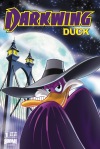





 Kick-Ass, the comic, despises its protagonist. Kick-Ass, the comic, thinks Dave Lizewski is a creepy (possibly sick in the head) loser, and while he’s certainly relate-able, Dave Lizewski is kind of a creepy loser. Kick-Ass, the movie, on the other hand, takes pity on this poor sad sack of teenage angst and allows his wish fulfillment fantasies to go ahead and work out, a notion the comic has utterly rejected, at least so far.
Kick-Ass, the comic, despises its protagonist. Kick-Ass, the comic, thinks Dave Lizewski is a creepy (possibly sick in the head) loser, and while he’s certainly relate-able, Dave Lizewski is kind of a creepy loser. Kick-Ass, the movie, on the other hand, takes pity on this poor sad sack of teenage angst and allows his wish fulfillment fantasies to go ahead and work out, a notion the comic has utterly rejected, at least so far.
